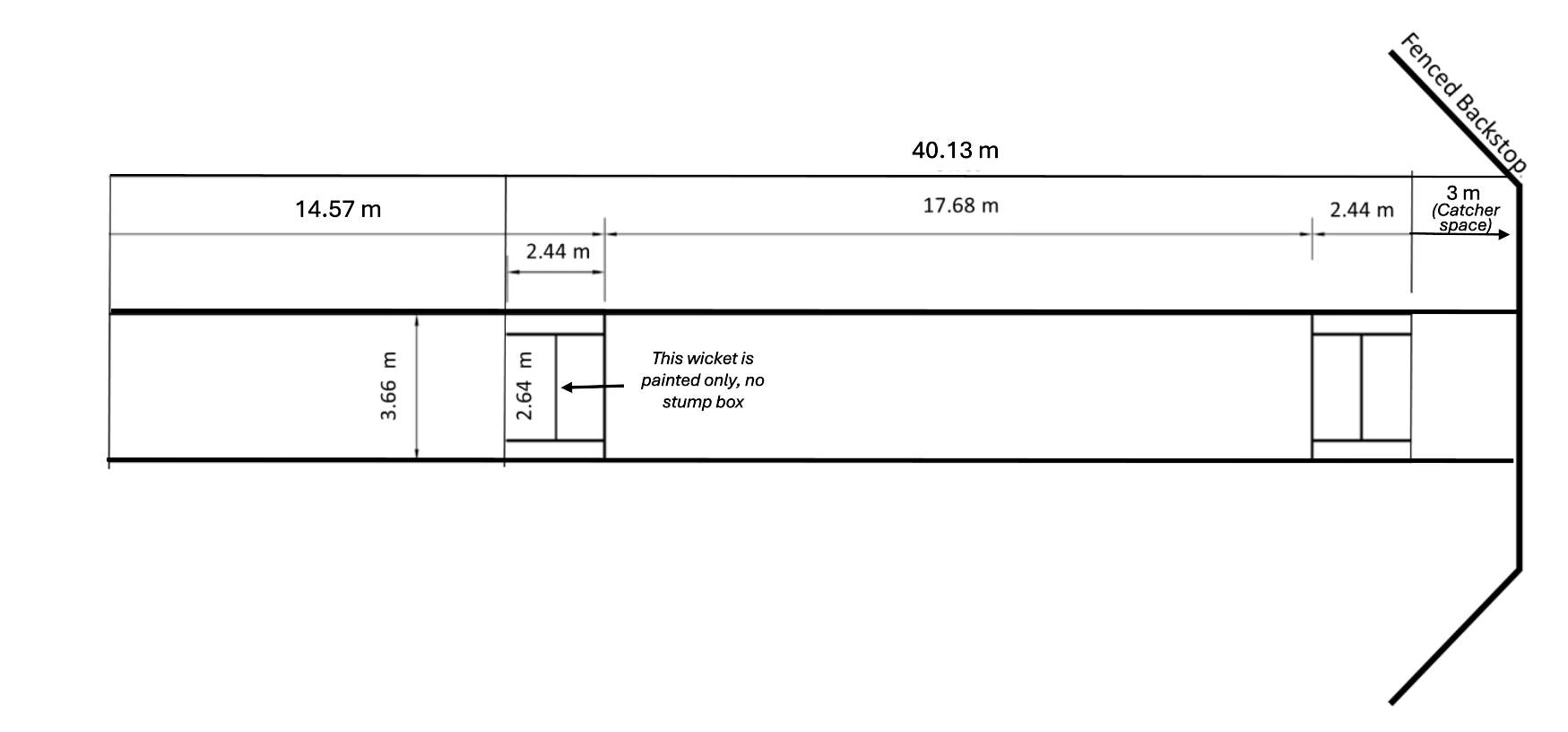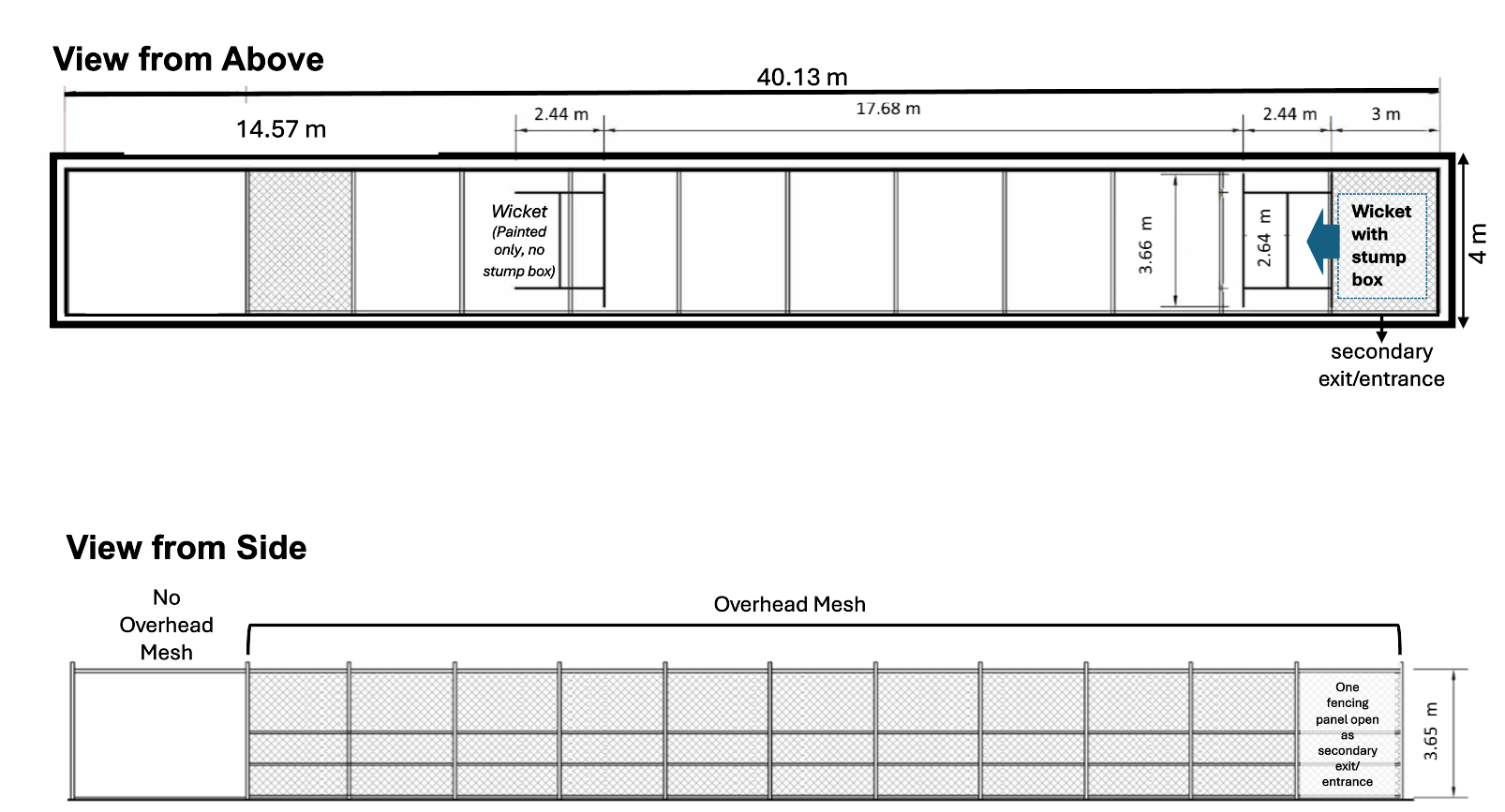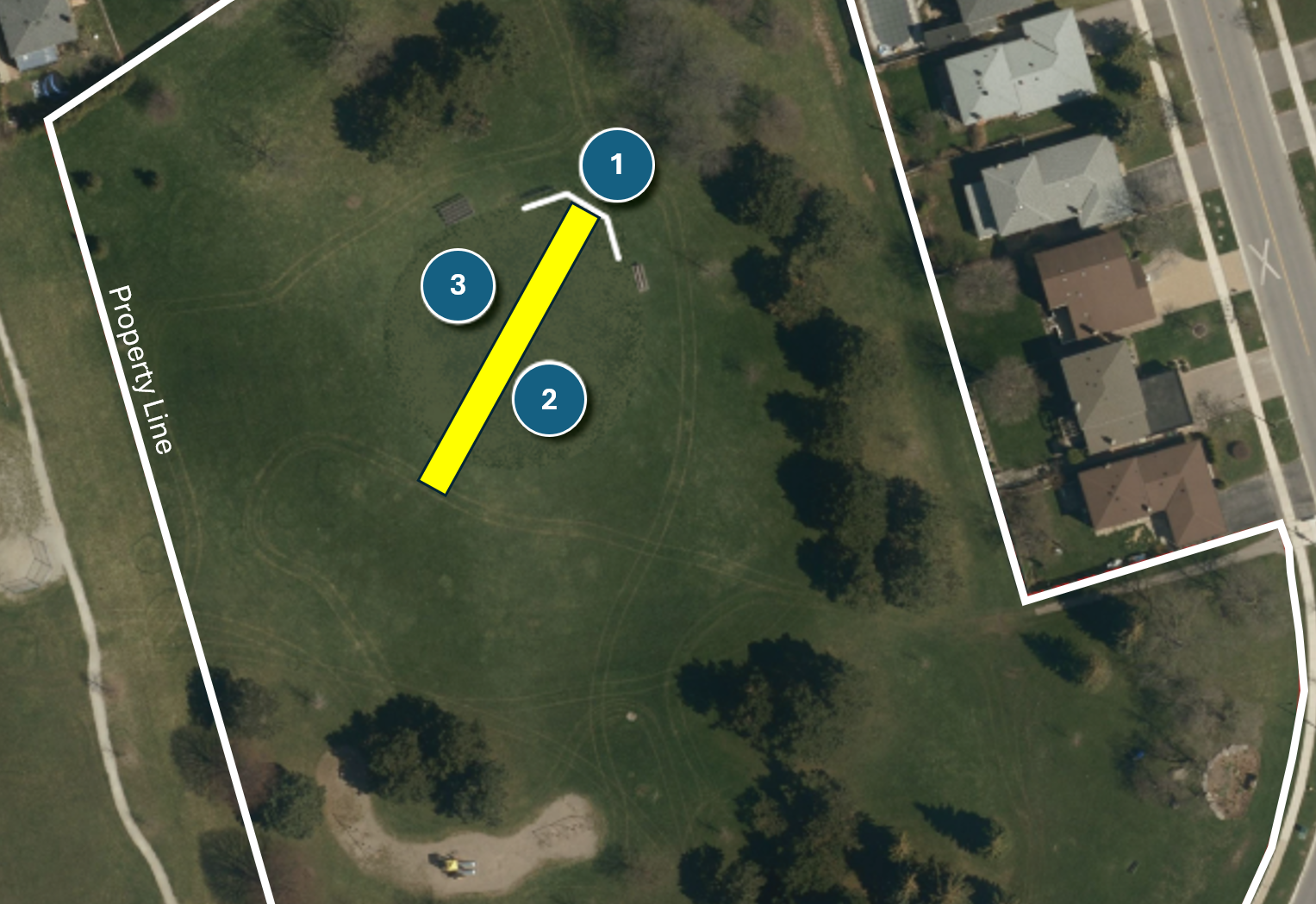
Cricket is one of the fastest-growing sports in Toronto, with growing demand for places to play across the city. In response, the City is developing a Cricket Strategy to guide the future of cricket in parks and recreation spaces. At the same time, new and improved cricket facilities are being planned at parks across Toronto to support everything from casual play to tournaments.
While we aim to provide fully accessible content, there is no text alternative available for some of the content on this site. If you require alternate formats or need assistance understanding our maps, drawings, or any other content, please contact Matt Bentley at 416-392-3949.
Type (don’t copy and paste) your email into the box below, check the box next to the e-update description and then click “Subscribe”. You will receive an email with instructions to confirm your request.
The City is developing a Cricket Strategy to help:
As part of the Parks and Recreation Facilities Plan, City staff reviewed Toronto’s existing cricket facilities to determine if improvements or new facilities were needed to keep up with demand. The 2019 Plan recommended the following actions over the next 20 years:
The timeline is subject to change.
Since 2020, the City has been engaging communities and stakeholders across Toronto to inform the development of the Cricket Strategy. Engagement activities are ongoing and will continue through 2025.
To date, this has included:
Documents are listed from least recent to most recent.
As part of the Cricket Strategy, the City is developing design standards for new cricket facilities. Draft standards have been created for three types of pitches. All designs include a concrete base with an artificial turf surface and white field markings
A standard cricket pitch is 51.7 metres long and includes two wickets.

Installed in locations with local demand for cricket but limited space, single-direction pitches include a backstop and are a smaller alternative to a standard-size pitch. Single direction pitches are approximately 40.1 metres long and include one standard wicket, one painted wicket (by the bowler) and a fenced backstop.

Batting cages provide space for casual practice. A single batting cage lane is approximately 40.1 metres long, four metres wide, fenced and with overhead mesh. There is an exit/entrance at both ends. Multiple lanes of batting cages can be grouped together.

There are currently 27 cricket pitches within City parks, some of which are shared with other activities.
| Location Name | Address | Number of Pitches | Classification of Pitch (for booking) |
|---|---|---|---|
| Ashtonbee Reservoir Park | 10 Ashtonbee Rd. | 2 | C |
| Caledonia Park | 1141 Caledonia Rd. | 2 | C |
| Cedarvale Park | 443 Arlington Ave. | 1 | C |
| Centennial Park - Etobicoke | 256 Centennial Park Rd. | 2 | C |
| Dentonia Park | 80 Thyra Ave. | 1 | C |
| Ellesmere Reservoir Park | 2950 Ellesmere Rd. | 2 | C |
| Fergy Brown Park | 3700 Eglinton Ave. W. | 2 | Premier |
| Flemingdon Park | 150 Grenoble Dr. | 1 | C |
| G. Ross Lord Park | 4801 Dufferin St. | 2 | Premier |
| Humber Arboretum | 205 Humber College Blvd. | 1 | B |
| Keele Reservoir | 4995 Keele St. | 2 | C |
| L'amoreaux Hydro | 1785 McNicoll Ave. | 1 | B |
| Remberto Navia | 65 Norfinch Dr. | 1 | C |
| Summerlea Park | 2 Arcot Blvd. | 1 | C |
| Sunnybrook Park | 1132 Leslie St. | 3 | Premier |
| Terry Fox Park | 300 Bamburgh Cir. | 1 | C |
| Thackeray Park | 2955 Kipling Ave. | 1 | C |
| Wexford Hydro | 55 Elm Bank Rd. | 1 | C |
The City proposed installing a new cricket pitch and batting cages in the north-east section of Milliken Park, to help meet high demand for cricket facilities (Council Motion MM32.45). However, based on community feedback collected in summer 2025, the project will not move forward.
A blue water droplet shows the location of a drinking fountain and/or bottle filler.
From June 27 to August 17, an online survey collected feedback on the proposed cricket additions to Milliken Park. Feedback highlighted community concerns that the park’s high and diverse existing uses would be displaced by the installation of cricket facilities. Respondents also raised safety concerns relating to stray cricket balls. Based on community feedback, the proposed cricket facilities in Milliken Park will not proceed. Thank you to everyone who participated.
From June 27 to August 17, an online survey collected feedback to help inform whether a cricket pitch and batting cages will be installed in Milliken Park, as well as potential design and permit considerations. 557 survey responses were received. A high-level summary of key survey results is provided below:
The majority of respondents who live within two km of Milliken Park do not support the installation of a cricket pitch or batting cage in the park.
Some respondents provided written feedback to explain their support for the installation of cricket facilities in Milliken Park. Common themes include:
Some respondents provided written feedback to explain their concerns about or opposition to the installation of cricket facilities in Milliken Park. Common themes include:
To meet local demand for cricket, the City is replacing an underused ball diamond in Parma Park with a single-direction cricket pitch with a backstop.
The Parks and Recreation Facilities Plan and the developing Cricket Strategy both identify a city-wide need for more cricket facilities. Parma Park was selected because:
Project Timeline
The timeline is subject to change.
Construction of the new concrete pitch with an artificial turf surface is underway. Final work includes painting playing lines, re-seeding and repairing the surrounding area to support turf growth and installing seating.
To meet local demand for cricket, the City is planning to convert two existing ball diamonds in Corvette Park into three new cricket pitches. The design includes one standard pitch that overlaps with two single-direction pitches.
The Parks and Recreation Facilities Plan and the developing Cricket Strategy both identify a city-wide need for more cricket facilities. Corvette Park was selected because:
The standard cricket field would measure approximately 120 by 100 metres, with a 51.7 by 3.66 metre rectangular artificial turf pitch at its centre. White painted lines or pylons would typically mark the outer boundary. The pitch is oriented in a northwest-to-southeast direction to allow for the flattest playing surface.
The single-direction pitches would each include a 40.1 by 3.66 metre pitch with a fenced backstop, allowing play in one direction.
This layout was developed in consultation with local cricketers and is designed to support casual and pick-up play, tapeball, hardball, youth development and tournament use. When only one match is scheduled, the standard pitch can be used; alternatively, the two single-direction pitches can operate simultaneously to support tournament play (as currently occurs).
The north ball diamond in Corvette Park will remain in place as part of the City’s network of over 300 ball diamonds. The central and southern diamonds will be replaced with single-direction cricket pitches. Staff are working with affected baseball and softball permit holders to identify suitable alternative locations in nearby parks for future seasons.
When not booked for cricket, the field will remain available for general park use.
To meet local demand for cricket, the City is planning to convert two underused mini-soccer fields in Byng Park into a single-direction cricket pitch with a backstop and a cricket batting cage. One soccer net will remain for casual use.
The Parks and Recreation Facilities Plan and the developing Cricket Strategy both identify a city-wide need for more cricket facilities. Byng Park has been selected as the site for a new single-direction cricket pitch and batting cage because:
The proposed layout was developed in consultation with local cricket users and the broader community. It includes a single-direction cricket pitch, measuring approximately 40.1 by 3.66 metres. The pitch surface is artificial turf with a concrete base. A fenced backstop at one end will direct play toward the outfield.
The batting cage measures approximately 40.1 by 3.66 metres with side fencing and overhead mesh (3.7 metres high), and includes exits at both ends. This provides a dedicated space for batting practice.
The layout is designed to support casual cricket, youth development, local tapeball and general practice.
One soccer net will remain in the park for casual pickup use, when the park is not booked for cricket. The City is working with affected mini-soccer permit holders to support the transition.
When not in use for cricket, the pitch and field will be available for general park use.
To meet local demand for cricket, the City is planning to convert an underused ball diamond in Littles Road Park into a cricket pitch. The space is already used for cricket.
The Parks and Recreation Facilities Plan and the developing Cricket Strategy both identify a city-wide need for more cricket. Littles Road Park was selected because:
The proposed field would measure 110 by 110 metres, with a 51.7 by 3.66 metre rectangular artificial turf pitch at its centre. White painted lines or pylons would typically mark the outer boundary. The existing ball diamond and backstop would be removed.
The new pitch will be well-suited for local tapeball and junior cricket play.
Littles Road Park is primarily permitted for cricket, with minimal requests for other uses. When not booked for cricket, the field will remain available for general park use.
To meet local demand for cricket, the City is planning to convert an underused ball diamond in Farquharson Park into a single-direction cricket pitch. The space is already being used for cricket.
The Parks and Recreation Facilities Plan and the developing Cricket Strategy both identify a city-wide need for more cricket facilities. Littles Road Park was selected because:
The single-direction rectangular artificial turf pitch will measure approximately 40.1 by 3.66 metres. It will include a fenced backstop at one end, allowing play in a single direction toward the outfield. This layout is ideal for local tapeball and junior cricket play.

The existing ball diamond is already used for cricket, with few other permit requests at this location. When not booked for cricket, the field will remain available for general park use.